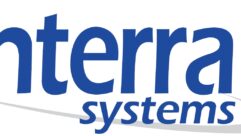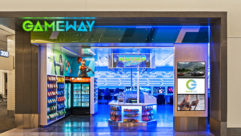
Oil Can Henry’s is an Oregon-based vehicle maintenance provider with more than 100 shops located throughout the Pacific Northwest. The chain is widely known for its 20-point full-service oil change – a service performed while customers wait in their cars.
Digital signage solutions provider, c3ms Media, approached Oil Can Henry’s to offer the company a better solution for content delivery and to help demonstrate, through the use of the right visual platform, a defined content strategy for better customer interaction through a new digital media tool set. The end result created up-sell opportunities for supplemental products and services as identified by the cars’ service history and customer engagement. c3ms Media designed and integrated a new touch screen-driven hardware and playback platform powered by its technology partner, BrightSign. Installation of digital signage displays in maintenance bays located across all of its key markets enabled Oil Can Henry’s to better connect with customers as they wait in their cars while services are performed.
Each service bay now includes a touch-based digital signage display comprised of an ELO 42-inch interactive touchscreen connected to a BrightSign XD1132 digital signage media player. The displays are mounted just outside the driver side window within direct view of the customer. Cameras are mounted under the car and above the hood, giving customers a close-up, real-time view of the maintenance being performed on their vehicles. The remaining screen area, when not touch-activated, shows seasonal service reminders.
The XD1132’s two video decoders output a combination of video and point-of-sale motion content. To bypass the need for additional video decoders, IP cameras output MJPEG feeds at 15 frames per second – a high enough frame rate that the feeds appear very close to true full-motion live video, showcasing the true flexibility of the BrightSign media player.
“BrightSign’s players are extremely capable and they can handle anything we throw at them – there’s really nothing we can’t accomplish on the BrightSign platform,” said Ray Heiser, president and CEO of c3ms Media. “In the case of Oil Can Henry’s, we used a single player to decode two video feeds and simulate an additional two video feeds with MJPEG via IP – while simultaneously managing database integration and interactive content on the touchscreens. And we still have room for future upgrades to the system, such as the addition of wireless audio via Bluetooth.”
At various points throughout the visit, the service technician utilizes the touchscreen to discuss the vehicle’s service history with the customer. The integration includes a POS feed displaying maintenance history that allows the technician to select the applicable service-based content segment. These 1-3 minute video segments visually explain the benefits of having these services performed on the vehicle. The customer can be shown any number of these videos in succession based on their needs. While the segments are playing, the technician can resume his work and return later to inquire about adding these recommended services.
All of these POS feeds, video segments, camera feeds and touch-screen content components are driven by a single BrightSign media player, and the entire network of media players is managed by c3ms Media on the cloud-based BrightSign Network.
This digital signage network can support additional future uses, including Bluetooth audio for portable speakers placed in the vehicle during service, along with tablet support of assets being stored and accessed on the media player. Additionally, the media player can be used to distribute content for corporate training and employee communication during off-hours.
This digital integration was implemented in a subset of Oil Can Henry’s locations to assess its impact on bottom-line financial growth for the company. The test pilot locations reported average total ticket service increases of nearly $22 per vehicle, compared to existing locations that haven’t yet incorporated this solution – this represents an overall increase of more than 20 percent. This successful pilot justifies the business economics for further site implementation.










